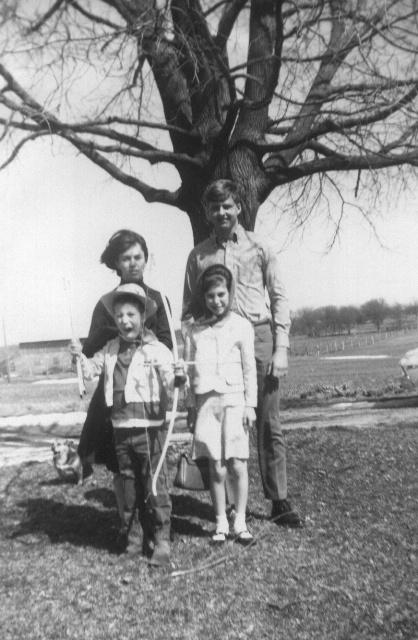Fight Target Panic with Bow Practice
Filed under: Bow Hunting, Deer Hunting, Hunting Blog
 I’ve shot a bow since early childhood. Even with that level of experience (I’m now 50), I still go through seasons of struggling with shooting accurately. Archery is a very mental sport and no one stays on top of their game every day (or season). In my last blog, bow practice, I discussed the “perfect practice makes perfect” principle as applied to shooting a bow. This week, I’d like to share an archery practice technique called blind bale. It is really a different form of “perfect practice makes perfect.” It is simply practicing with your bow at a target that is only three feet or so down range. In addition, the shooter has his eyes closed throughout the shot. This is done so the shooter can totally concentrate on form and not aiming at a spot.
I’ve shot a bow since early childhood. Even with that level of experience (I’m now 50), I still go through seasons of struggling with shooting accurately. Archery is a very mental sport and no one stays on top of their game every day (or season). In my last blog, bow practice, I discussed the “perfect practice makes perfect” principle as applied to shooting a bow. This week, I’d like to share an archery practice technique called blind bale. It is really a different form of “perfect practice makes perfect.” It is simply practicing with your bow at a target that is only three feet or so down range. In addition, the shooter has his eyes closed throughout the shot. This is done so the shooter can totally concentrate on form and not aiming at a spot.
I started this technique while suffering through a bad case of target panic. When my sight pen would come close to the spot I was aiming, I wouldn’t be able to trigger a release with my eyes open. If you’ve never experienced target panic, you can’t understand, and if you have, you share my grief! A friend of mine, CJ Davis, shared the blind bale technique with me. I thought it sounded silly and continued flinging arrows and flinching. Most shots failed to hit close to where I was aiming.
Out of desperation, I tried the blind bale technique. I shot at a target placed a few feet in front of me for a week. I shot for a week without looking at a spot. I simply shut my eyes and totally focused on my shooting form. During week two, I took 10 shots blind bale and then shot at a pie plate at 10 yards with no markings on it – just a white 9” target. I was amazed at the end of two weeks how well I shot. I was able to group as good as any time during my archery career.
Since them, I usually begin each archery practice session by shooting 10 or so shots using the bind bale technique. At times, I’ve forgotten the lessons I’ve learned and simply began flinging arrows. The size of my groups increase and I remember the huge advantages of reinforcing correct form and starting each practice session with the blind bale technique.
This technique will not benefit everyone as they may have a different problem such as shooting a bow that’s draw weight or length is not appropriate for them. However, if your shooting problems are not the result of equipment that is not tuned or equipment that is mismatched to you, then incorporating the blind bale technique into your practice will probably result in tighter groups at all distances.
Growing Deer together,
Grant



